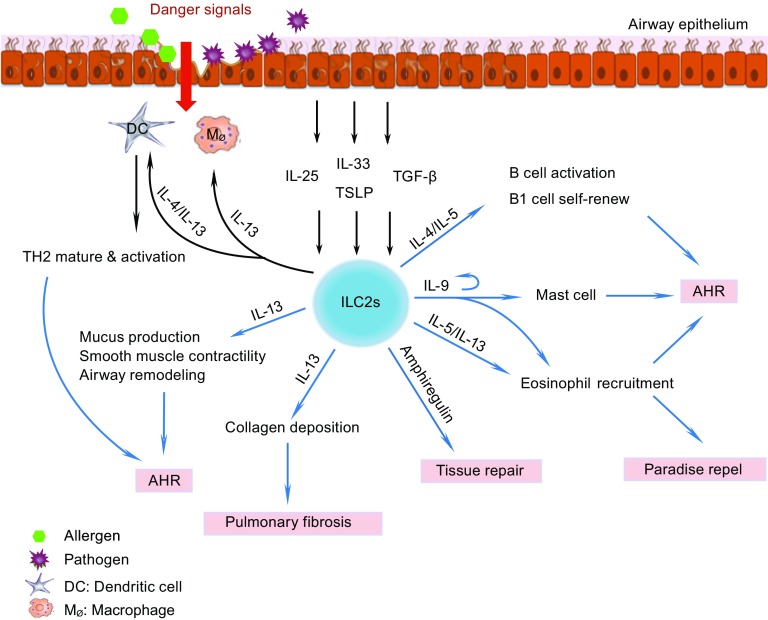Figure 3.

ILC2 functions in the lung. Following interaction with pathogens or allergens, the airway epithelium secretes IL-25, IL-33, TSLP, and TGF-β. Upon a molecular cue from the damaged epithelium, activated macrophages and DCs also release IL-33. All of these cytokines activate ILC2s. After activation, ILC2s proliferate and produce copious amounts of IL-4, IL-5, IL-9, IL-13, and amphiregulin. IL-4 stimulates B cells and also activates DCs and enhances Th2 cell maturation and activation. IL-5 and IL-13 stimulate the proliferation and recruitment of eosinophils, which are involved in parasite clearance and airway hyper-responsiveness (AHR). IL-5 also enhances B1 cell self-renewal and antibody production by B cells. ILC2s produce IL-9, and the autocrine effect of IL-9 stimulates secretion of effector cytokines by ILC2s. IL-13 induces smooth muscle contractility and airway remodeling that leads to AHR. Additionally, IL-9 plays an essential role in mast cell differentiation and also can induce mast cells to secrete IL-6; IL-9 can also promote both the proliferation of eosinophils and induce their migration into the lung. IL-13 can also induce collagen deposition and the development of pulmonary fibrosis. Furthermore, IL-13 enhances eosinophil recruitment and alternative macrophage activation. Finally, ILC2s also play an important role in airway remodeling by secreting amphiregulin. See text for details
